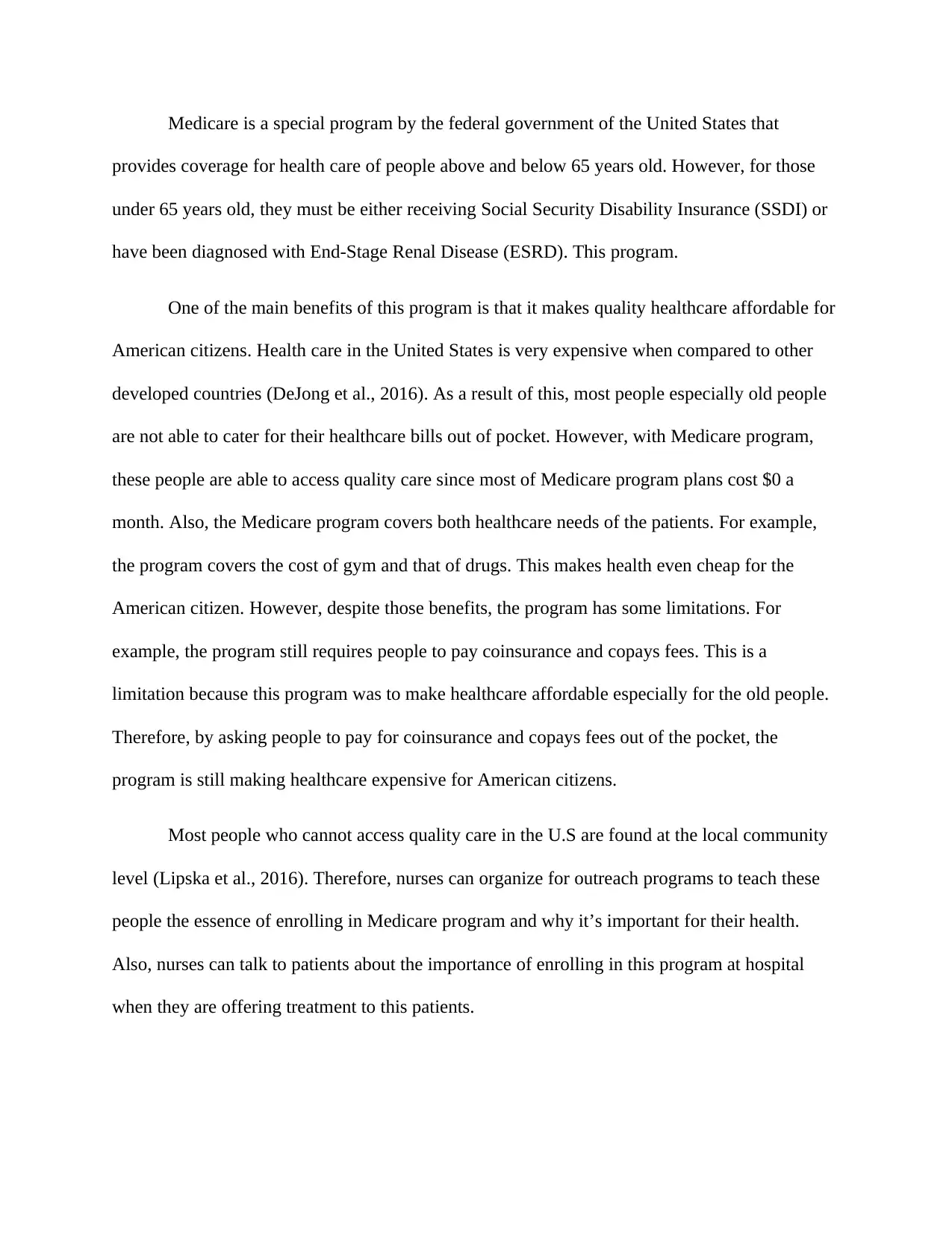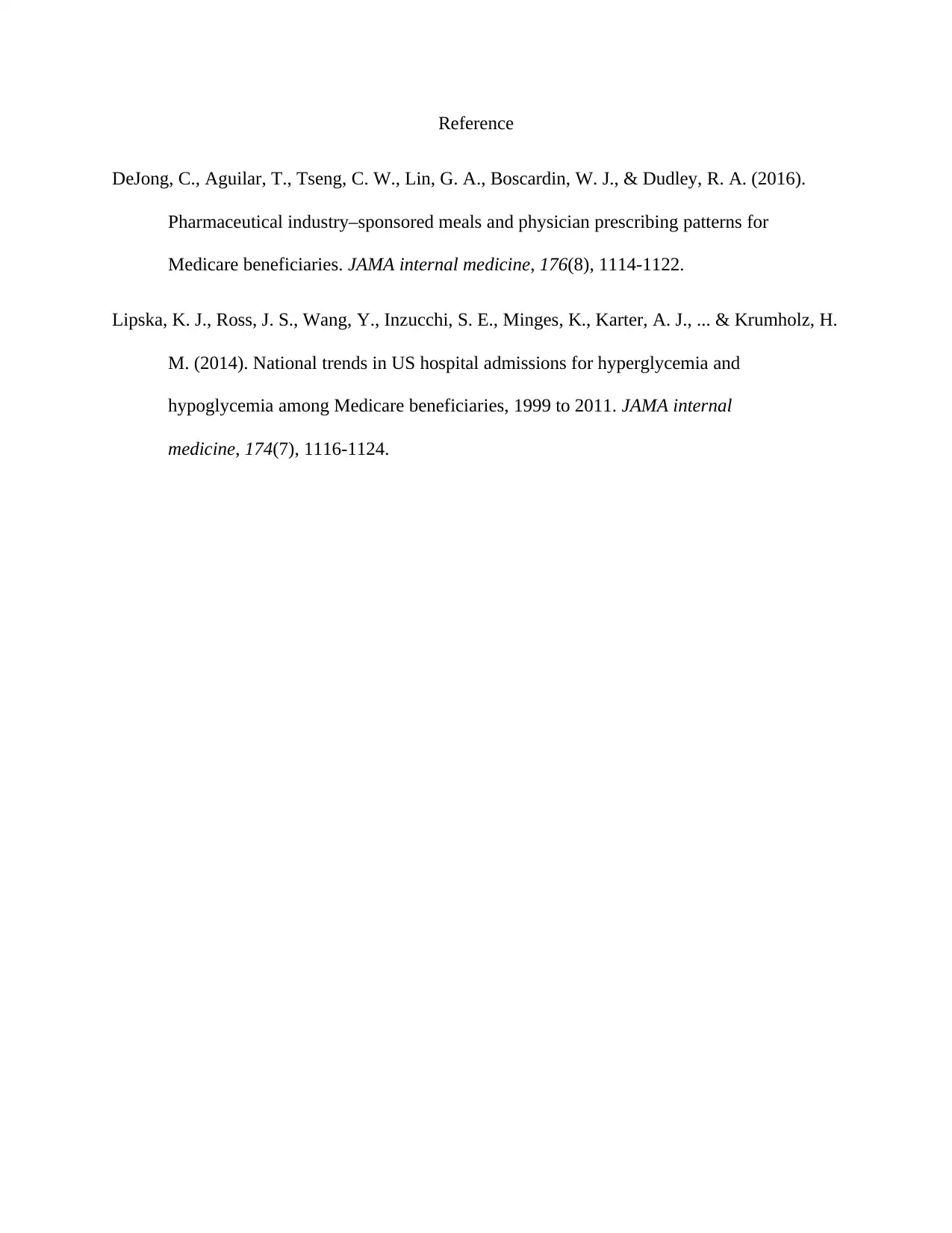Medicare Program: Benefits, Limitations, and Healthcare Strategies
VerifiedAdded on 2022/10/11
|2
|471
|17
Report
AI Summary
This report analyzes the Medicare program, a federal initiative in the United States, focusing on its benefits and limitations. The program provides healthcare coverage for individuals over 65 and those under 65 with specific conditions like Social Security Disability Insurance (SSDI) recipients and those with End-Stage Renal Disease (ESRD). The report highlights that the program makes healthcare affordable for American citizens. However, the report also acknowledges the limitations of the program, such as the requirement for beneficiaries to pay coinsurance and copays. The report suggests the role of nurses in educating people about the Medicare program to help them access quality healthcare. References include studies on pharmaceutical influence and national trends in hospital admissions for hyperglycemia and hypoglycemia among Medicare beneficiaries.
1 out of 2








![[object Object]](/_next/static/media/star-bottom.7253800d.svg)